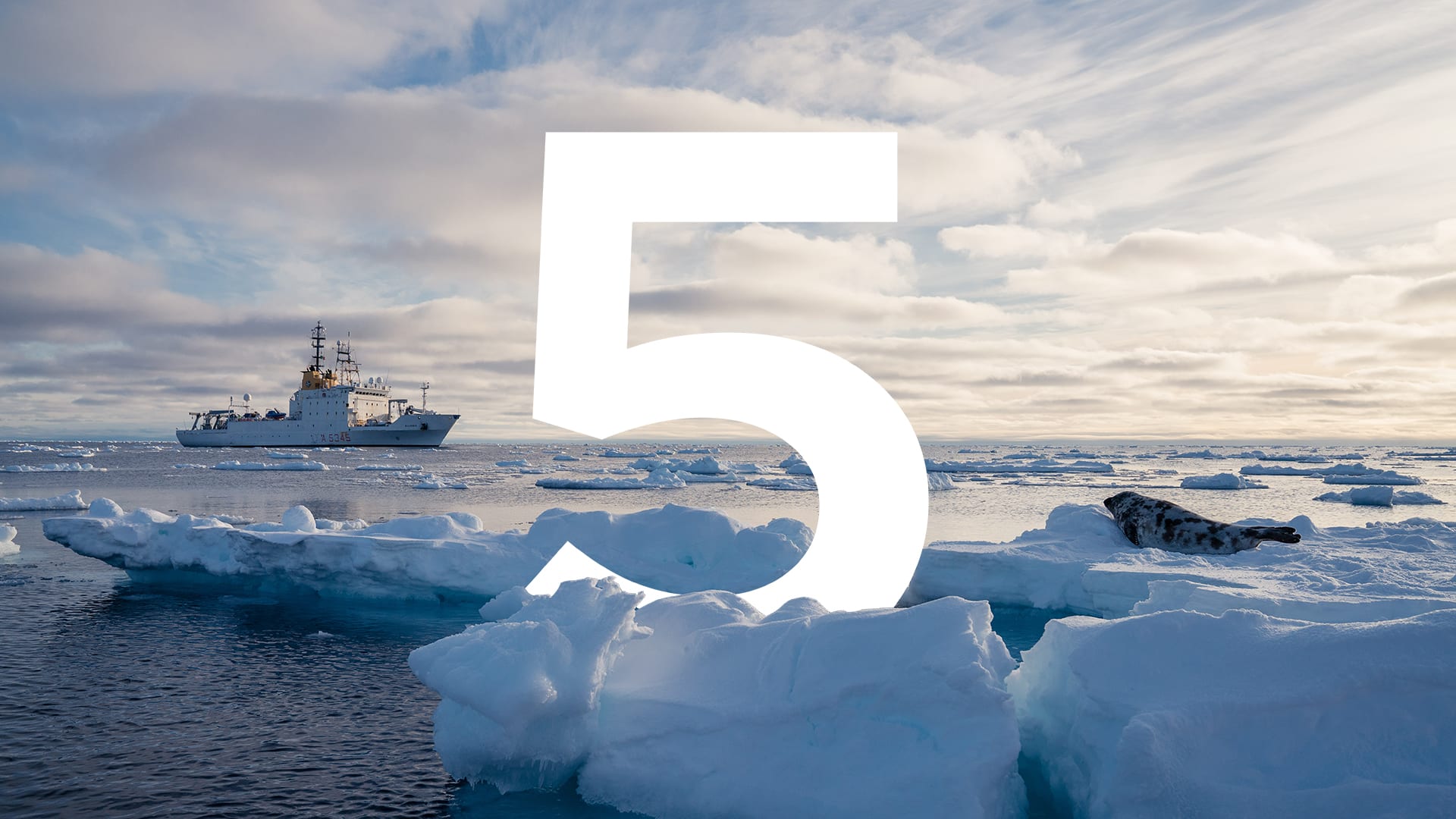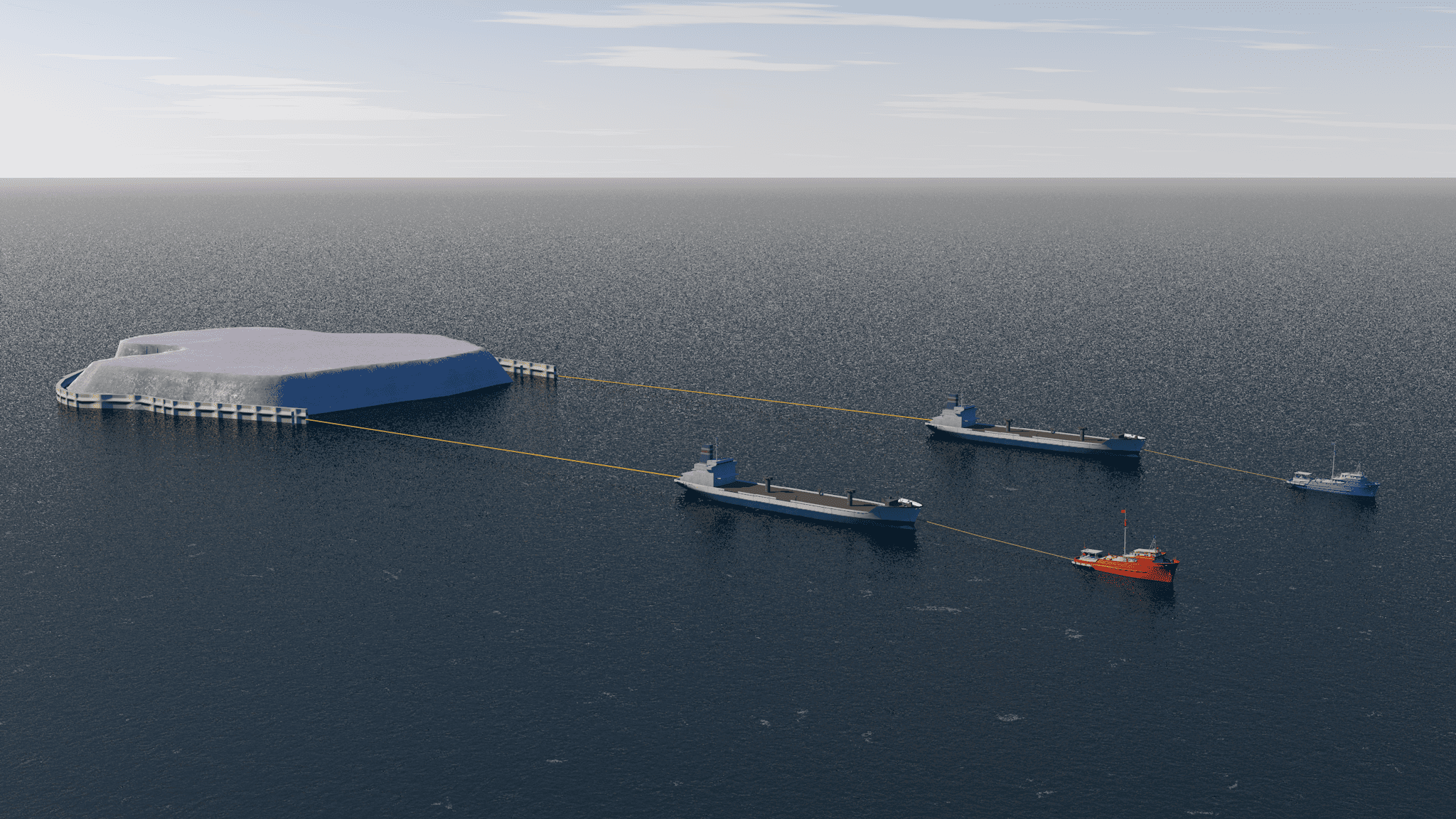Ocean science into action
Five solution-oriented stories 2021
By Daniel Hentz | February 17, 2021
If you’re like us, 2020 may have made you antsy for some good news. But while we're only a few months into the new year, you won’t have to wait long for some inspiring ideas. From smart cameras aimed at preventing collisions between whales and ships, to groundbreaking partnerships with fishermen, here are five stories from WHOI about ocean solutions happening right now.
WHOI builds bridges with Arctic Indigenous communities
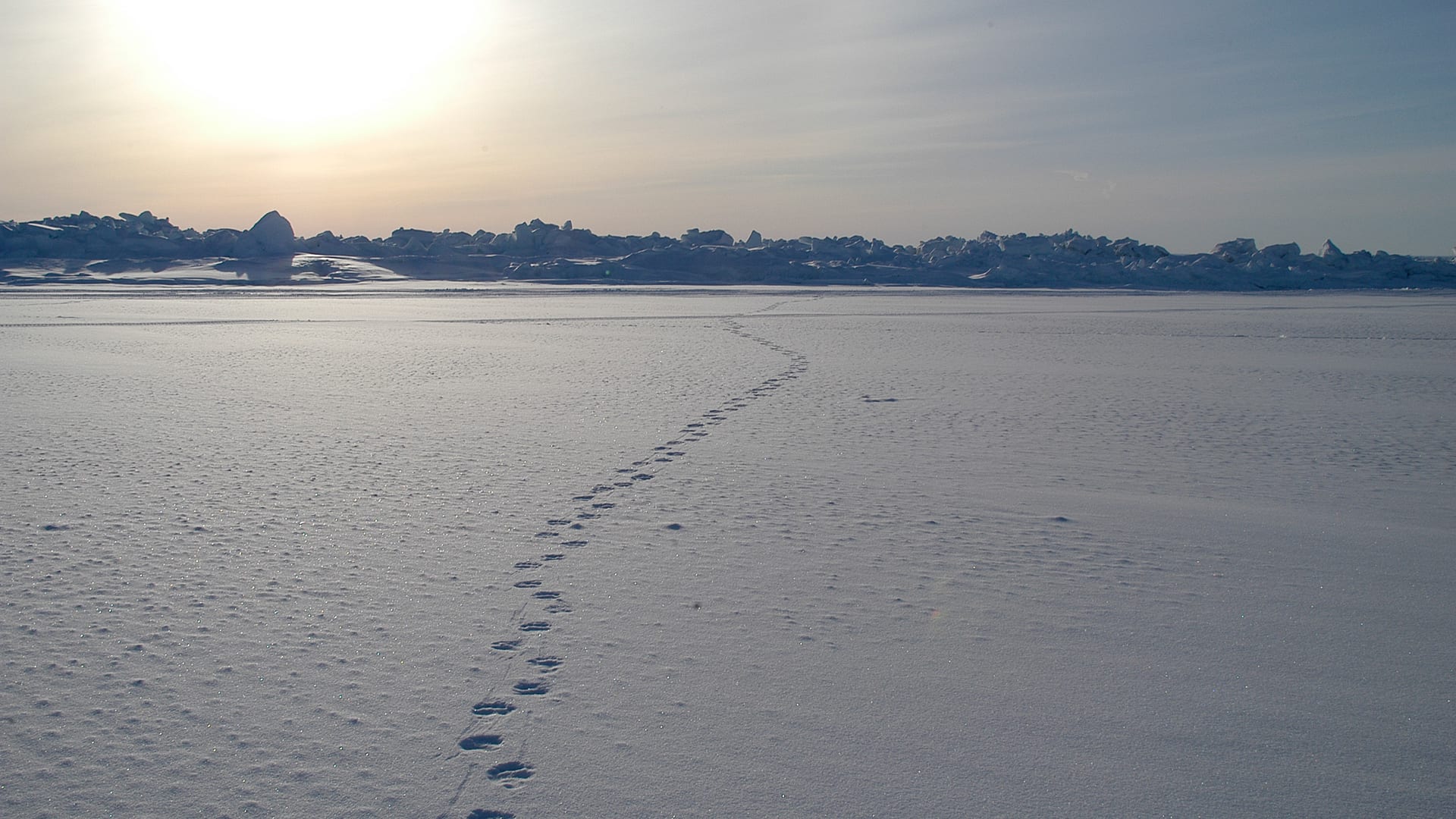
Polar bear tracks lead away from a research encampment, where scientists test out an Arctic-adapted AUV REMUS, called "Icebot." (Photo by Amy Kukulya, © Woods Hole Oceanographic Institution)
For Arctic native communities like the Iñupiat, the retreat of seasonal sea ice means increasing food insecurity and cultural upheaval. But a rallying cry from the National Science Foundation aims to combine indigenous traditional knowledge with a fleet of WHOI’s best ocean robots and their handlers. Among them are machines that can autonomously analyze changing ice sheet thickness and even track future oil spills trapped under the frozen mosaic. Termed “Navigating the New Arctic,” this program puts one eye on the past and a more robotic iris on the future.
Ocean data gives Northeast fishermen an edge against a warming ocean
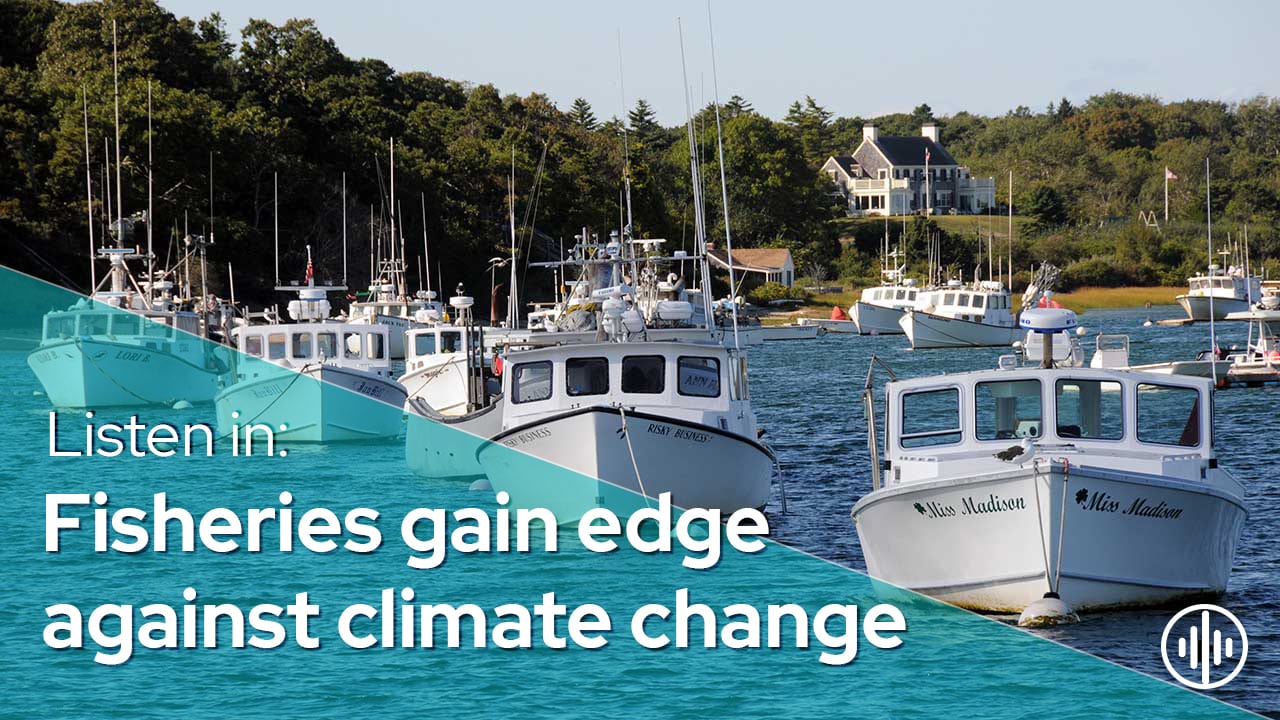
Research by CINAR Fellows in Quantitative Fisheries and Ecosystems Science supports assessment and management of living marine resources in the Northeast U.S. (Photo by Jayne Doucette, ©Woods Hole Oceanographic Institution)
It’s no secret that the relationship between scientists and fishermen has been lacking collaboration. That may be changing thanks to a new data collection project between WHOI and members of the Commercial Fisheries Research Foundation in Rhode Island. The collaboration, called “the WHOI Shelf Research Fleet,” arms fishermen along the U.S. continental shelf with precision instruments to track warming waters in one of the fastest changing regions of the ocean. Subsequent meet-ups between the fleet and WHOI physical oceanographer, Glen Gawarkiewicz, have led to greater interpretive power for participating fishermen. That data literacy paid dividends in December, when a ring of warm water spiraled off the Gulf Stream, intruding colder fishing grounds. Spoiler, these fishermen were prepared.
Smart cameras keep lookout for endangered whales
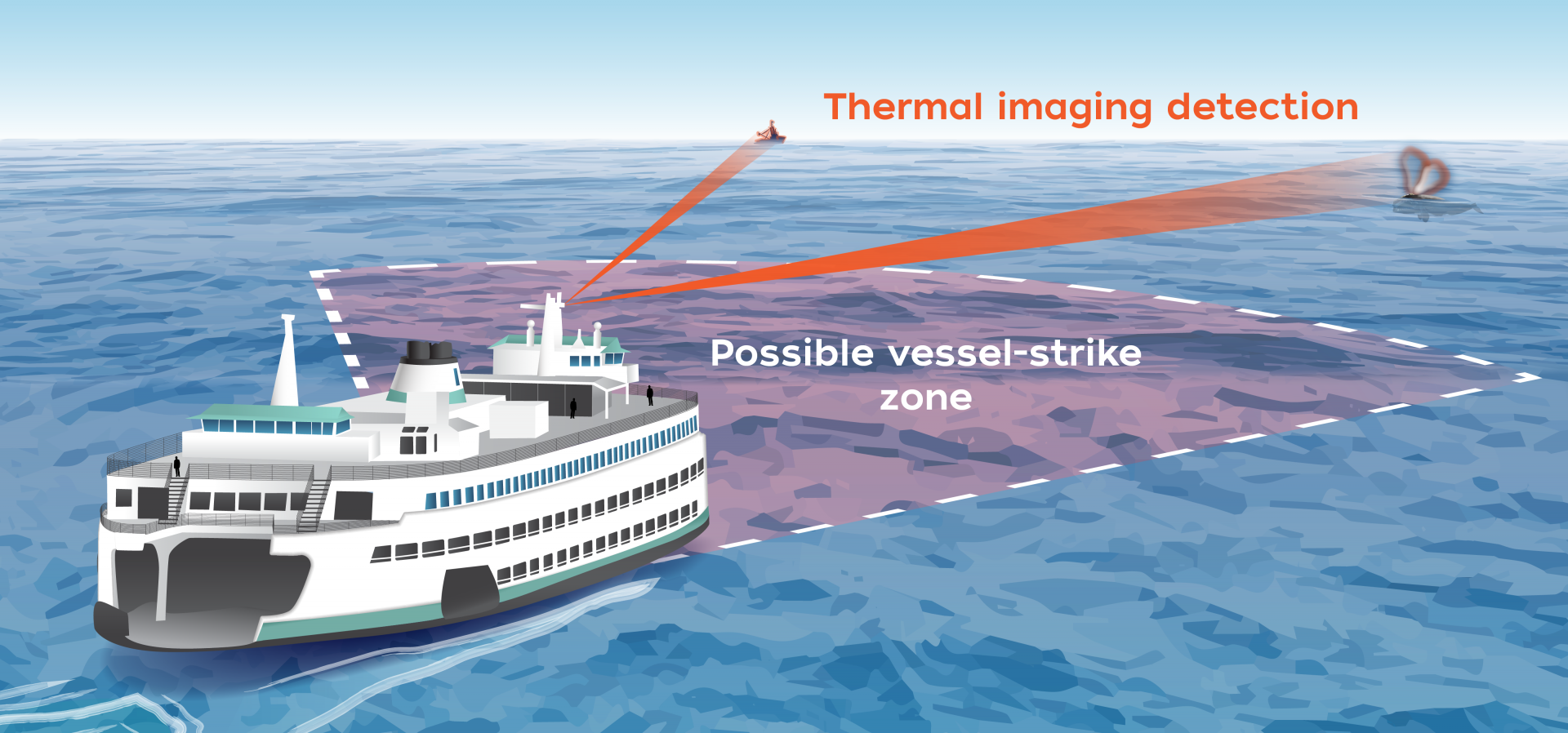
Thermal imaging camera systems mounted on ferries and ships are able to detect moving objects several miles away. If a whale is identified, the system sends an alert within seconds, enough time for most vessels to slow down or change course. (Illustration by Natalie Renier, WHOI Creative.)
The great long-distance swimmers of the sea are increasingly outmatched by the whir of giant ship propellers. For critically endangered species, like the North Atlantic right whale, it’s a threat they can no longer afford––at the time of this writing, one of the already few 15 newborn calves has been fatally struck off the U.S. coast. But an infrared imaging camera modified by WHOI engineers may be changing that. The smart-cam is capable of real-time detection by scanning surface waters for the misty exhales of nearby whales. All the software is missing now is an alert message that reads, “thar she blows!”
Can Icebergs be towed to water-starved cities?
Most of the world’s fresh water is trapped in sheets of ice, thousands of miles from where we might wish it to be. WHOI researchers are now investigating the possibility of towing icebergs from Antarctica to water-staved places like Cape Town, South Africa. (Illustration by Tim Silva, © Woods Hole Oceanographic Institution)
There are estimated to be 10,000-30,000 icebergs drifting in the North Atlantic and about 100,000 in the Southern Ocean around Antarctica at any given time. For WHOI geologist Alan Condron, these naturally occurring icebergs could be a key source of fresh water for drought-ravaged cities. Now he and his colleagues are grappling with the question of what it would take to tow one, and what impacts doing so may have on marine ecosystems.
‘High-octane’ hurricane fuel swirls in the Gulf of Mexico
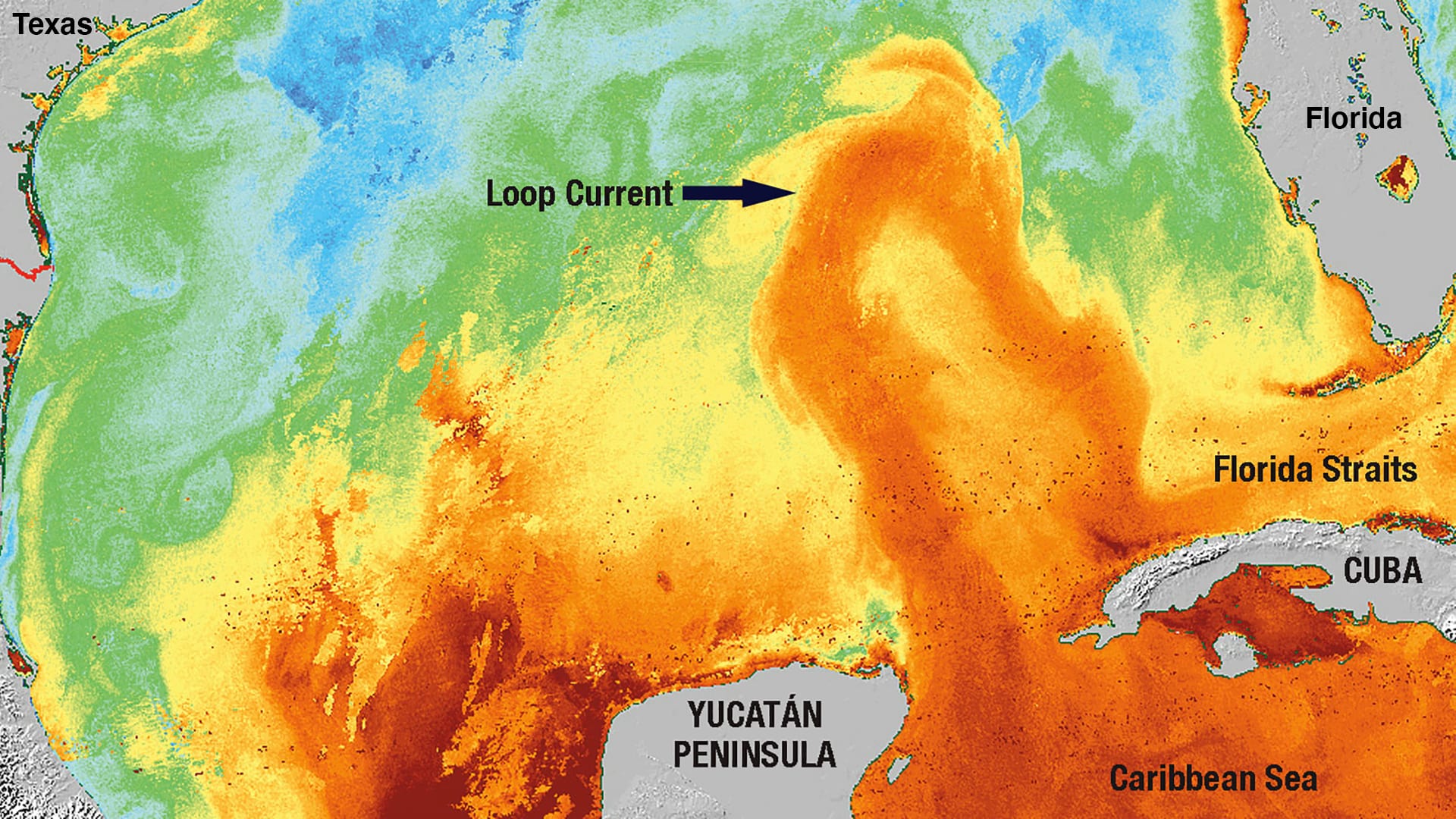
The Loop Current (orange) is like a big river of warm water that flows northward from the Caribbean Sea. It sometimes loops up close to Louisiana and then swoops back down through the Florida Straits and into the Atlantic Ocean. (Sea surface temperature image by the Ocean Remote Sensing Group, © Johns Hopkins University Applied Physics Laboratory)
When the Gulf Stream meanders past Cuba and around the Florida panhandle, it can sometimes pinch off, leaving behind a tropical whirlpool the size of Maine swirling around the Gulf of Mexico. That eddy of warm water can supercharge hurricanes travelling overhead. With the ocean getting warmer, experts say this “hurricane fuel” may need to become a more regular consideration for storm-trackers. That’s why WHOI scientists are tracking these warm-water rings with ARGO floats.

